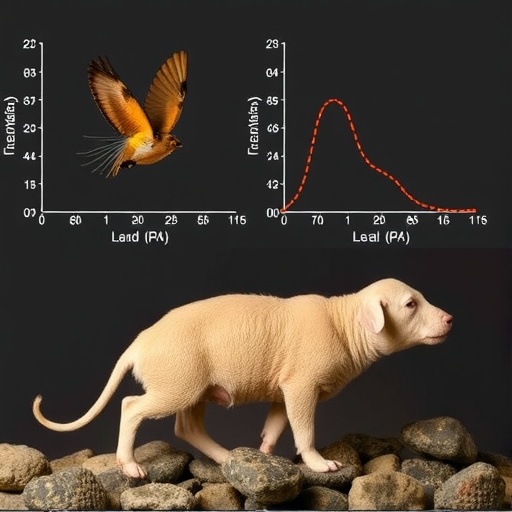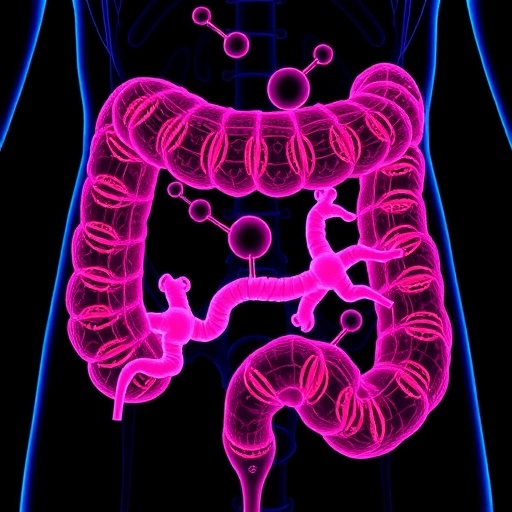In an era where precision in pharmacokinetics holds paramount importance, the recent meta-analysis conducted by Cheng, Jeong, and Jusko emerges as a significant contribution to the scientific community. This research centers around levamisole, a drug historically utilized in veterinary medicine and oncology, establishing its varying absorption and disposition across multiple species. Utilizing a minimal physiologically-based pharmacokinetic (PBPK) model, the study investigates the dynamics of levamisole in diverse biological systems, shedding light on its potential therapeutic applications and safety in different contexts.
Historically, levamisole was predominantly employed as an anthelmintic agent in livestock, but its role has evolved significantly. Its immunomodulatory properties have led to interest in its application for certain human diseases, particularly those associated with immune dysfunction. However, the pharmacokinetic properties of levamisole vary widely among different species, highlighting the complexity of predicting drug disposition and response in humans based on animal models. The research by Cheng and colleagues aims to elucidate these variations through comprehensive data synthesis and analysis.
The team utilized existing literature to compile data on levamisole’s absorption rates, distribution characteristics, metabolism, and excretion pathways across various species. By employing a meta-analysis strategy, the authors were able to aggregate findings that were previously dispersed in different studies, providing a clearer picture of levamisole’s pharmacokinetics. This approach not only enhances the reliability of the findings but also allows for a more holistic understanding of how this drug behaves in different biological contexts.
One of the key findings of the study is the identification of rates of absorption that differ significantly between species. This difference is crucial because it informs dosage adjustments that may be necessary when transitioning from animal models to human applications. The minimal PBPK model employed in the analysis serves as an effective tool for simulating how levamisole distributes within various organs and tissues, taking into account specific physiological parameters that differ among species. These insights are invaluable for researchers looking to tailor drug therapies for human patients derived from animal studies.
Furthermore, the study delves into the metabolic pathways of levamisole, revealing how it is processed by different organisms. Understanding the metabolic fate of a drug lays the foundation for predicting potential drug interactions and adverse effects, which is especially critical in polypharmacy scenarios. By highlighting the unique metabolic capabilities of various species, the authors provide a compelling argument for the careful consideration of species selection in drug development and testing.
Adverse effects associated with levamisole have also been documented, particularly when it is used outside of its traditional scope. The meta-analysis discusses these side effects in the context of species-specific reactions, emphasizing the need for clinicians and researchers to remain vigilant. The authors advocate for the cautious translation of animal model findings to human clinical settings, given the unique physiological differences that can lead to unexpected outcomes.
The implications of this research extend beyond mere academic interest; they touch upon practical aspects of drug development and regulatory considerations. If levamisole is to be repurposed or used more widely in therapeutic contexts, understanding its pharmacokinetics across species becomes vital in ensuring efficacy and safety. Regulatory bodies often mandate extensive animal studies, and insights from this meta-analysis could refine such approaches, potentially reducing the number of animals required for research while still providing adequate data for safety assessments.
Moreover, this work contributes to the growing field of personalized medicine, where understanding a patient’s unique metabolic profile can inform treatment decisions. As we navigate the complexities of individualized therapies, studies like this one become increasingly relevant, guiding clinicians in optimizing drug selection and dosages based on a thorough understanding of how a drug like levamisole functions within different biological systems.
Dr. Cheng and his colleagues invite further exploration into the pharmacokinetics of other drugs, suggesting that the methodology they employed could be applied to a broader range of substances. This research highlights a pivotal moment in the evolution of pharmacokinetic studies, signaling a shift toward models that can integrate vast amounts of data from disparate sources, thus paving the way for future innovations in drug development.
In summary, the meticulous work undertaken by Cheng, Jeong, and Jusko provides vital insights into the absorption and disposition of levamisole, showcasing the importance of considering species variability in pharmacokinetic studies. Their findings carry significant implications for both clinical practice and regulatory frameworks, furthering our understanding of how pharmaceuticals can be tailored to meet the needs of diverse populations. This research is not only an academic advancement but also a critical step toward enhancing patient safety and treatment efficacy across species.
As we continue to unravel the complexities of pharmacokinetics in an era marked by rapid advancements in therapeutic options, the contributions of studies like this will undoubtedly guide the future of drug development. The integration of minimal physiologically-based pharmacokinetic models stands as a testament to the evolving landscape of pharmacology, reflecting a commitment to precision, efficacy, and safety in medical treatments.
Subject of Research: Levamisole pharmacokinetics across species
Article Title: Meta-analysis of levamisole absorption and disposition across diverse species using a minimal physiologically-based pharmacokinetic model.
Article References:
Cheng, C., Jeong, YS. & Jusko, W.J. Meta-analysis of levamisole absorption and disposition across diverse species using a minimal physiologically-based pharmacokinetic model.
J. Pharm. Investig. (2025). https://doi.org/10.1007/s40005-025-00770-6
Image Credits: AI Generated
DOI: 10.1007/s40005-025-00770-6
Keywords: levamisole, pharmacokinetics, meta-analysis, species variability, drug development, PBPK model, personalized medicine.
Tags: animal models in pharmacokineticscomparative pharmacokinetics of levamisoledrug disposition in humansimmunomodulatory effects of levamisolelevamisole in veterinary medicinelevamisole safety profileslevamisole therapeutic applicationsmeta-analysis of levamisole studiesminimal physiologically-based pharmacokinetic modelpharmacokinetics in immune dysfunction diseasesspecies-specific drug absorptionvariations in drug metabolism across species





